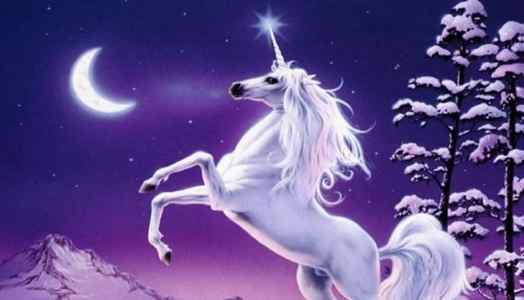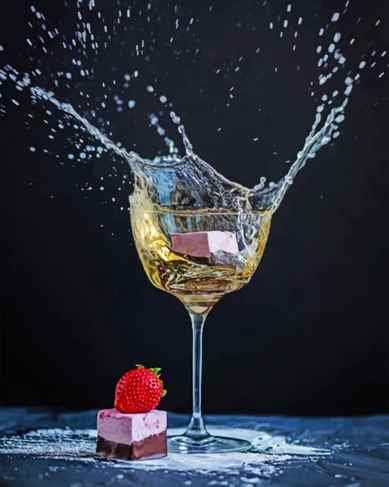WHAT COLOUR IS A UNICORN?
Well, let’s think about this for a second. There are paintings of unicorns. And there are movies about them. Also unicorns have shown up on tapestries, in novels, poems, songs, video games, tattoos, little sculptures made of plastic that children play with, etc. In fact there are many, many depictions and descriptions of unicorns out there, but are these real unicorns?
So, with this realization I should like to amend my question to read:
What color is a REAL unicorn?
This is more difficult to answer isn’t it? To answer the original question you were probably thinking to yourself, unicorns are white, or silver, or perhaps even golden. Not many of you thought of a black unicorn or a green one. Although I’m sure someone out there said plaid just to be a smart ass. Indeed, if we could use descriptions of unicorns as evidence, then we could have hardy discussions citing this text or that cartoon. But alas, I wish to know about REAL unicorns and just as some depictions of, say, bears resemble the genuine article, others are a bit more fanciful. So we are best to confine ourselves to the real deal and consider only REAL unicorns when trying to discover their color.
But now that we have restricted our question to REAL unicorns, everything changes and this brings up other questions:
1) What makes a unicorn a unicorn?
2) Are there any REAL unicorns?
3) Depending on the answers to the above questions, can we say anything meaningful about REAL unicorns, or can we only speak about the descriptions of unicorns that came from people’s imaginations?
1) What makes a unicorn a unicorn?
I don’t know. Most descriptions of unicorns look an awful lot like a regular old horse with a pointy (usually spiraling) bone sticking out of the center of its forehead. It’s that bone, a single horn that is supposed to make the unicorn special. But I don’t know if it’s a true horn (like a cow or goat has that never falls off), an antler (like a deer or moose has that falls off and is replaced every year), or some sort of pseudo-horn (different from the other two, like pronghorn or giraffes have). Perhaps it’s not made of bone at all but is a hair-like growth, similar to a rhino’s horn. Is a rhinoceros a unicorn? There are two species that possess a single horn, and indeed some early explorers proclaimed to have found REAL unicorns when they first encountered rhinoceroses. And what of narwhals? Here is a beast with a single horn growing from its “forehead”. The horn even spirals, although it’s actually made of modified teeth. There are numerous insects with single “horns” upon their foreheads. Can an insect be a unicorn?
Let’s take it easy on ourselves and say that a unicorn is a furry beast with the general body shape of a horse (this includes goats, gazelles, deer, etc.) with a hard pointy projection sticking out of its forehead, and move on.
2) Are there any REAL unicorns?
In true scientist fashion I have to say, “I don’t know”. Why? Well the short answer is, you can’t prove a negative (i.e. There are no unicorns). There was a philosopher of science named Karl Popper that helped us with that. The long answer is; we can come up with tons of scenarios where unicorns do exist. Let your imagination run wild:
1. The loose definition of unicorn could include insects, etc.
2. There could be an entire planet of unicorns (presumably with grass, waterfalls, and rainbows)
3. Perhaps unicorns are in some valley in the Himalayas we haven’t checked yet.
4. Maybe unicorns went extinct 1000 years ago and we haven’t found any fossils yet
5. Maybe unicorns do exist, but their horns are actually antlers that grow in 5 seconds and fall off 5 seconds later and decompose 5 seconds after that. And this happens only in the light of a full moon that has been filtered through the leaves of a 100 year old oak tree. The rest of the time they just look like regular horses.
So, yes, there could be REAL unicorns (and leprechauns, and trolls, and fairies, etc.).
3) Can we say anything meaningful about REAL unicorns, or can we only speak about the descriptions of unicorns that came from people’s imaginations?
No, we can’t say anything meaningful about REAL unicorns. Why not? Because we lack that all important thing, that one thing that separates natural from supernatural, real from imaginary, existence from nonexistence: Evidence.
There is no evidence that unicorns exist. Not a body, not a photograph (that didn’t turn out to be fake), not a hair. We have absolutely no evidence of the existence of unicorns. They are indistinguishable from any imaginary item.
No one knows anything about REAL unicorns (I know, can’t prove a negative, but I’m trying to make a point here…). But we can say this another way: Everyone knows all there is to know about REAL unicorns (which is nothing), AND everyone knows exactly as much as everyone else knows about REAL unicorns (again, nothing).
This isn’t to say there aren’t people that can expound for hours on the subject of unicorns in literature or epic poems. I’m not discounting any arguments a scholar may have over the pure whiteness of any given unicorn on any given tapestry or postcard. I’m talking about REAL unicorns, and on the subject of REAL unicorns until some REAL evidence comes our way we are all experts and know all there is to know about REAL unicorns: Nothing.
What Color Is Your Unicorn?

Today I want to write about the color of the unicorns. I believe unicorns are of invisible color, if there is such color, and we assign them one.
There are those of us that think unicorns are white, and to some they are black.
I want to talk about the unicorns of green color, as in the color of money and about the blue unicorns, like the color of the sea and the sky.
The green unicorns are very popular among the large investors: Among these investors, the unicorns are software companies valued at one billion dollars and above: The Green Unicorns
These unicorns live and die quickly and frequently, so much so that people have assigned them a special name since they are very common. These unicorns are a Pair a Dime.This saying is not at all true since they are very expensive, they are worth millions of dollars. It rather refers to the fact that very few of these unicorns survive and reach a mature age.
Almost all of us like the color green. The believers of the green unicorns love this color even more. So much so that many times they lose their common sense and they bet more than they should.
The blue unicorns are very popular among the Spanish speaking countries. This is thanks to a Cuban writer-singer, Silvio Rodriguez. He wrote a beautiful and very popular song called in Spanish, Mi Unicornio Azul: My Blue Unicorn
Millions of girls and boys, women and men young and old grew up singing this song. If you are lucky enough, and this song has touched you intimately, then you would still be looking for the lost blue unicorn. After all, there is a considerable bounty if you ever find it.
Sometimes I wonder which one of these two unicorns is more important, the green or the blue. I don’t really know, but I imagine that each one of us, since the day we were born is always looking for ours.
After all, our free will guides us and at the end of the day, we decide the color of our own unicorn.



